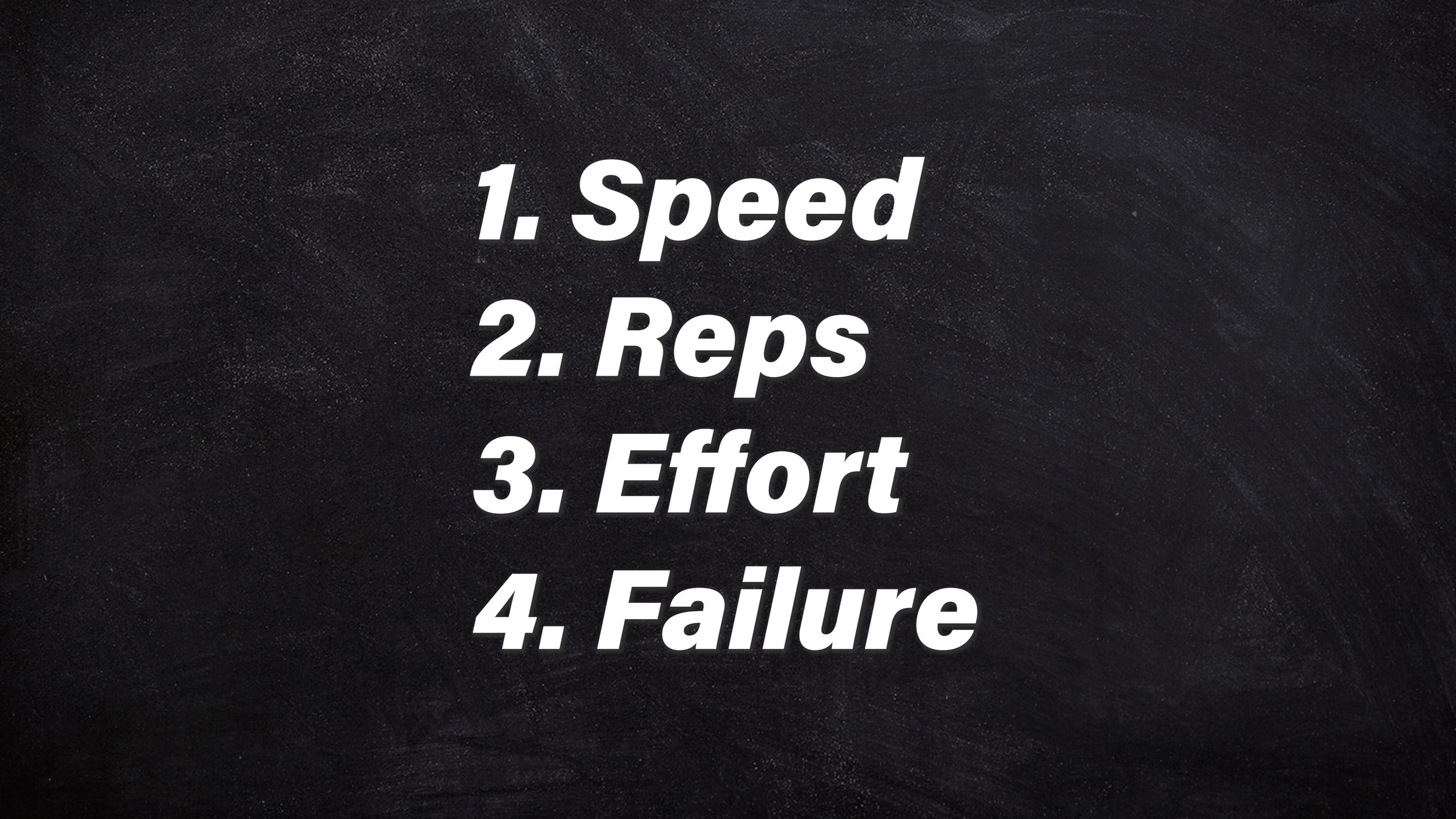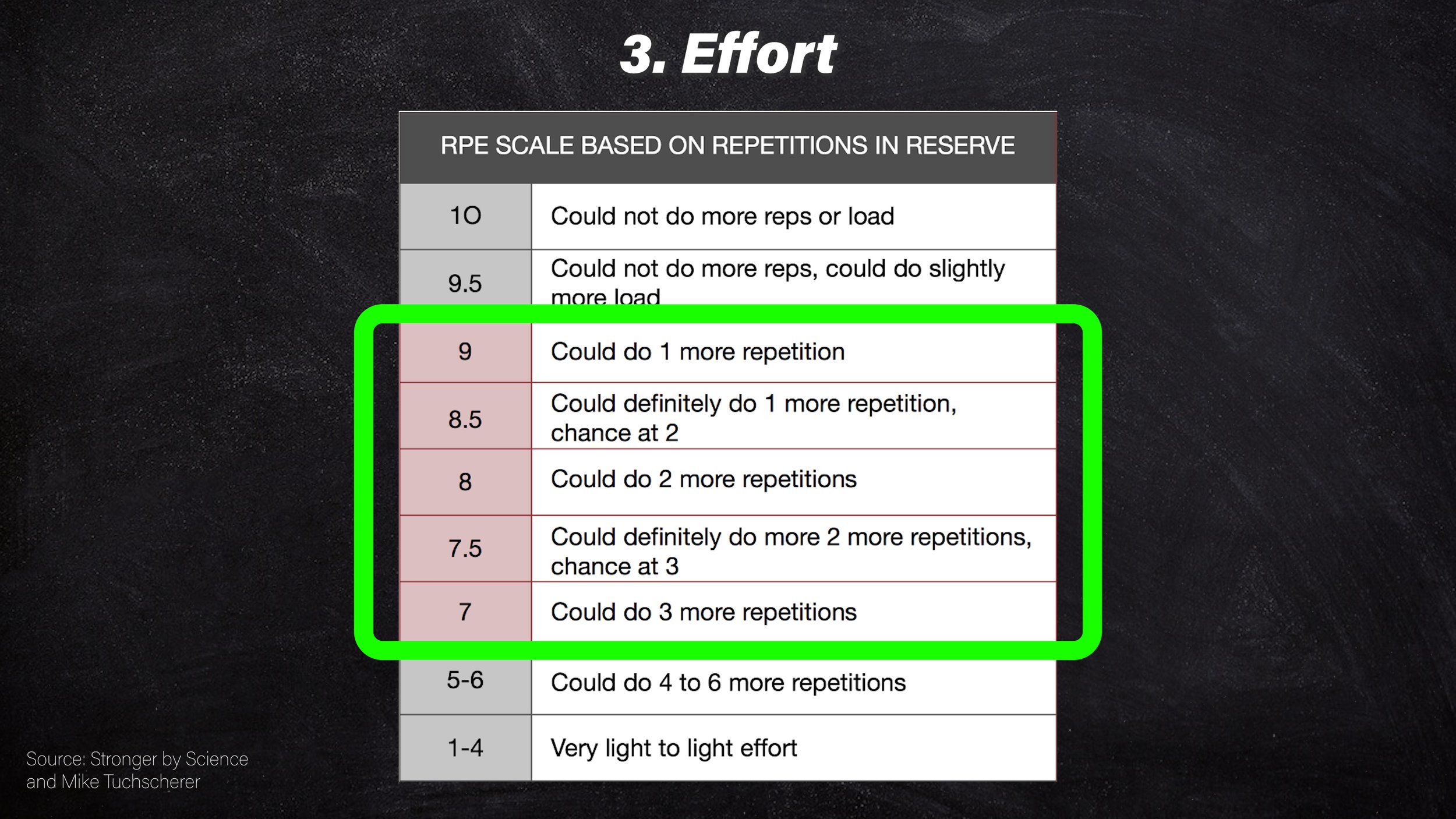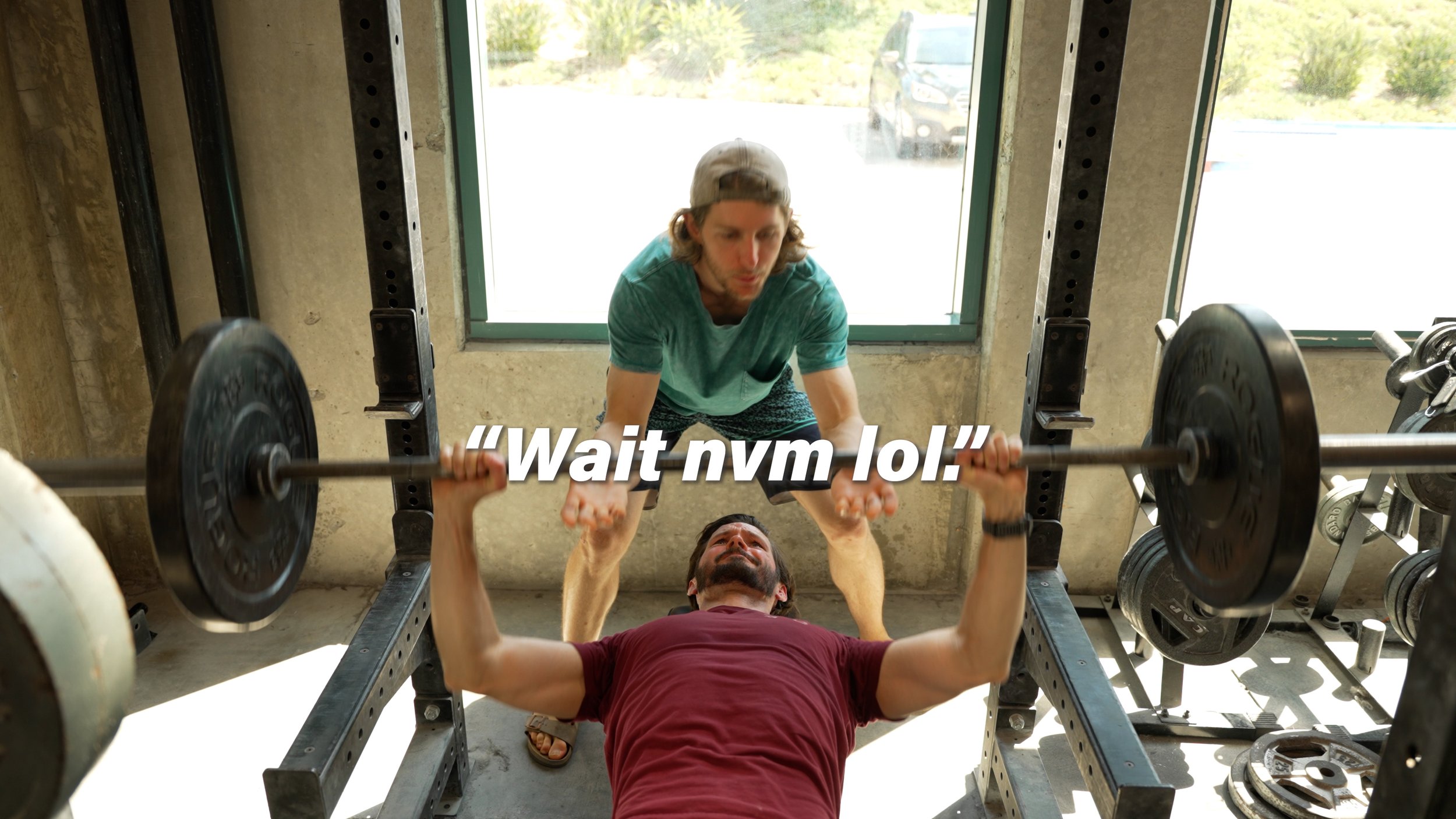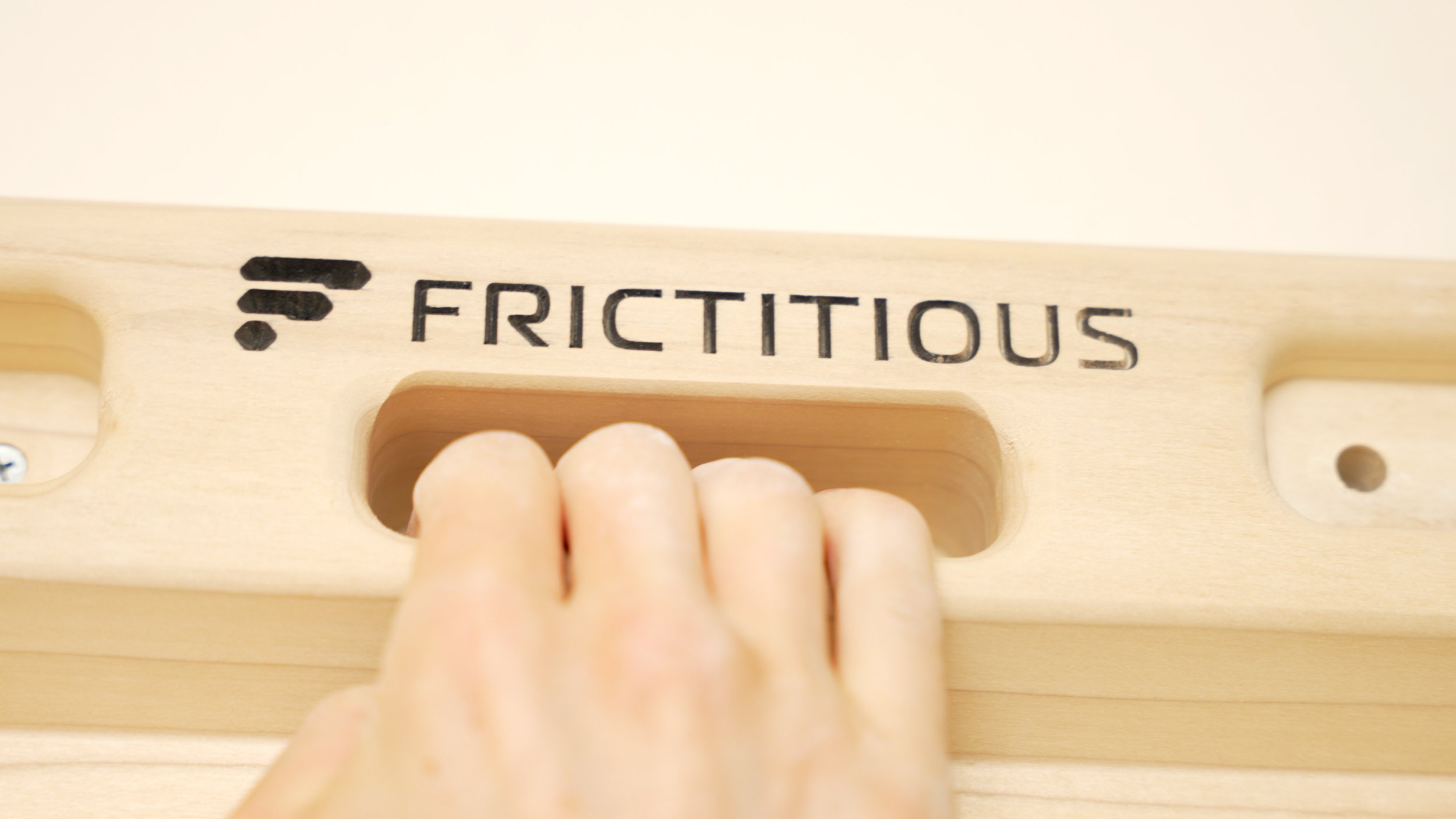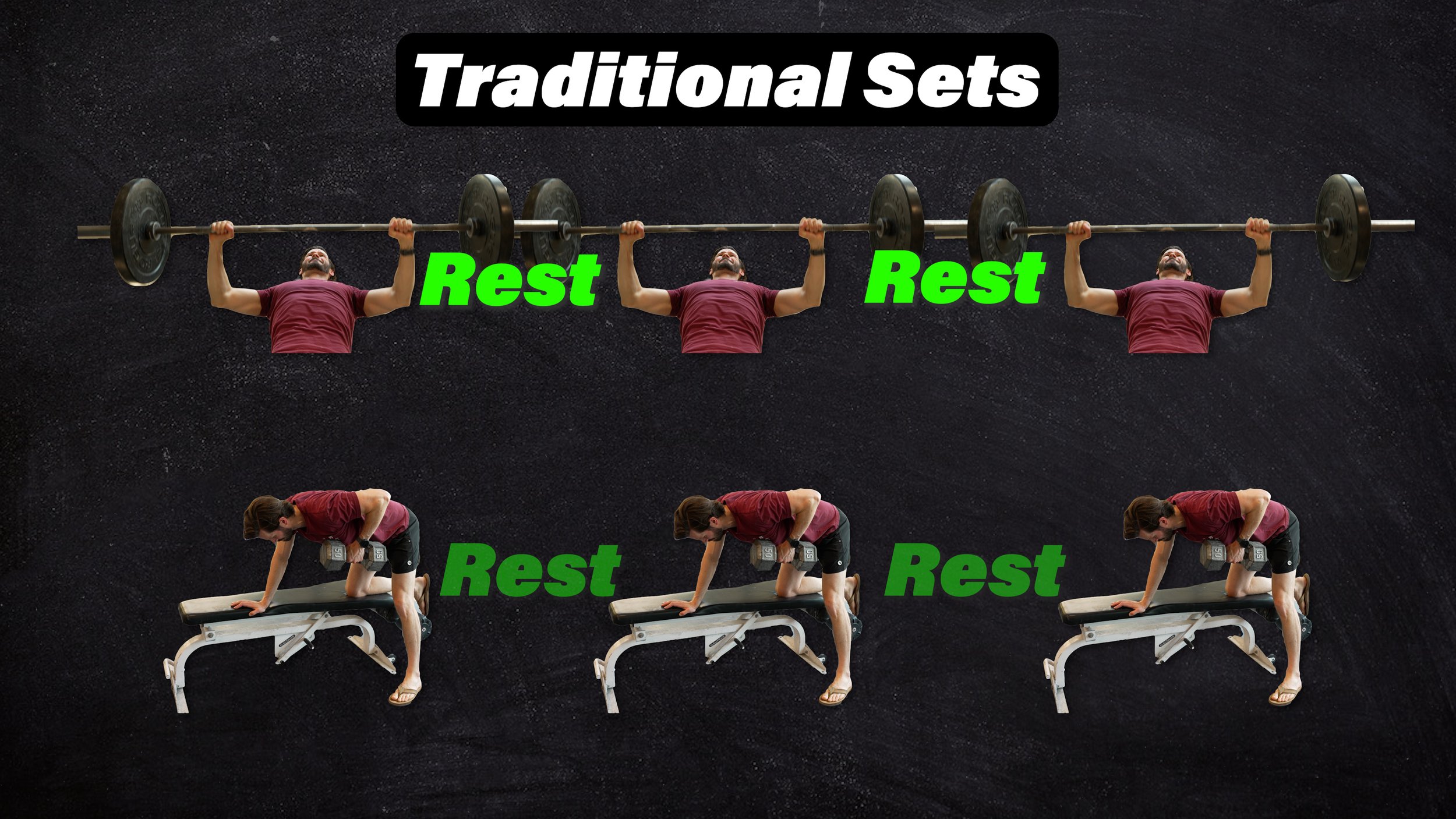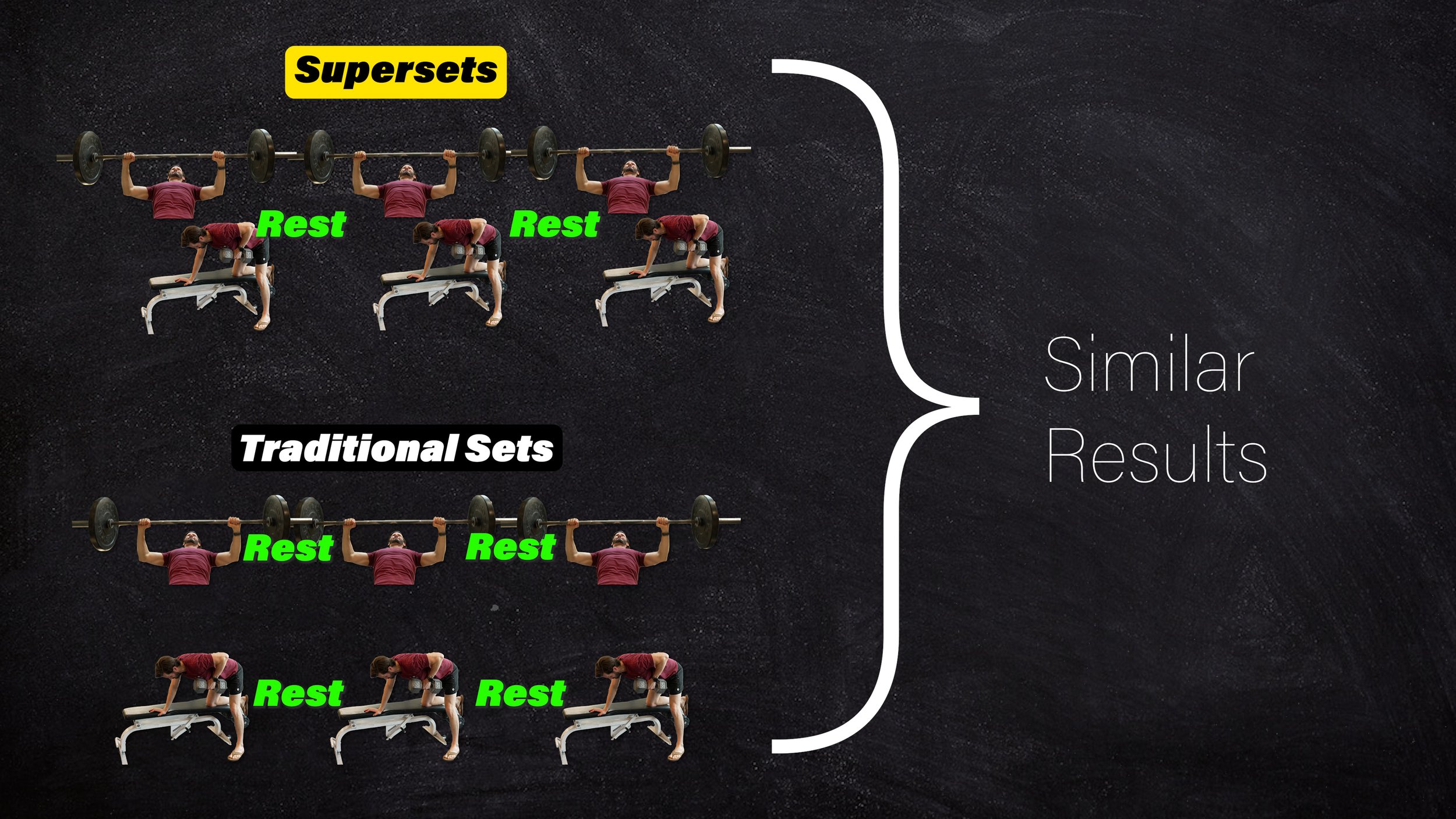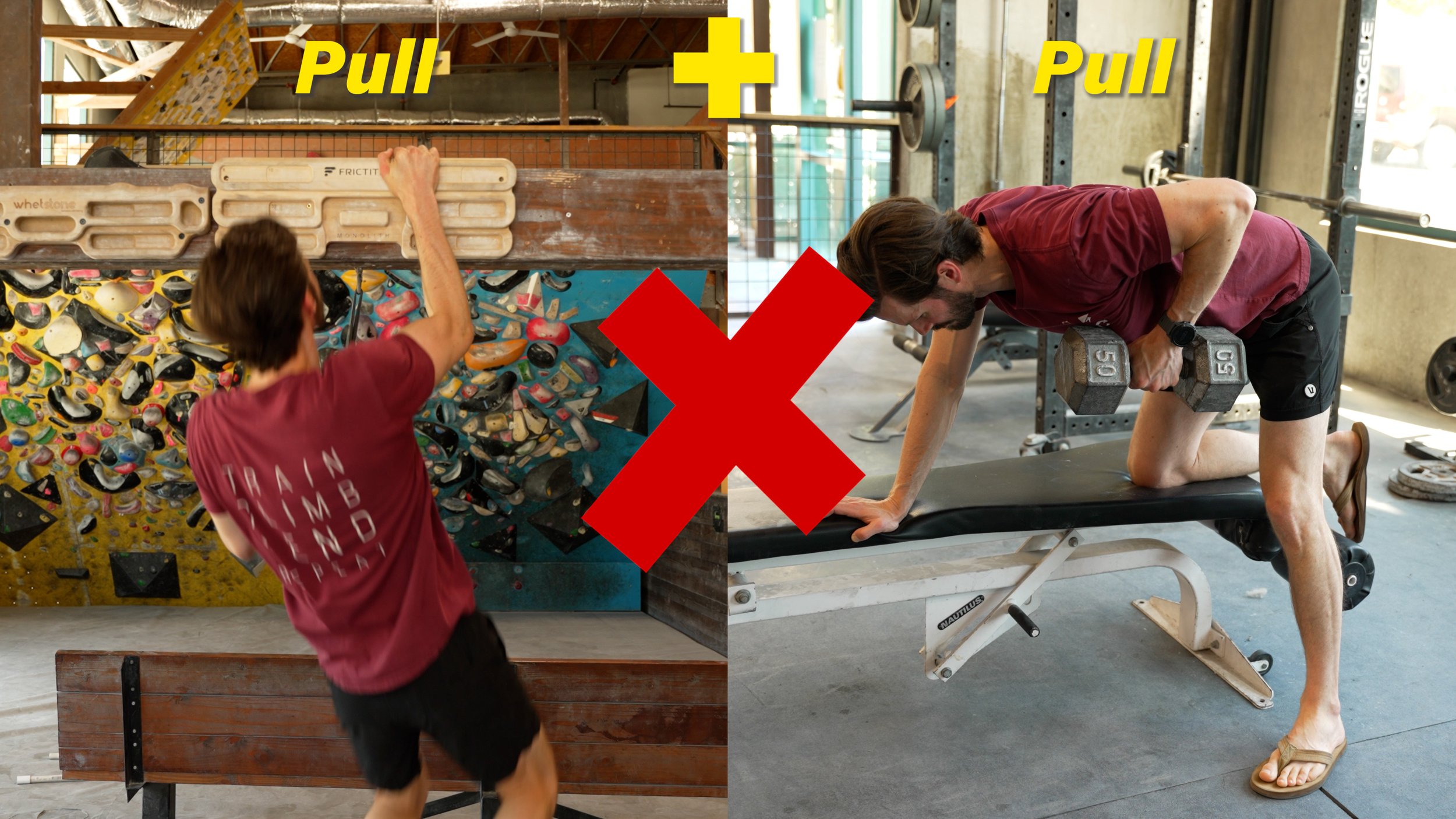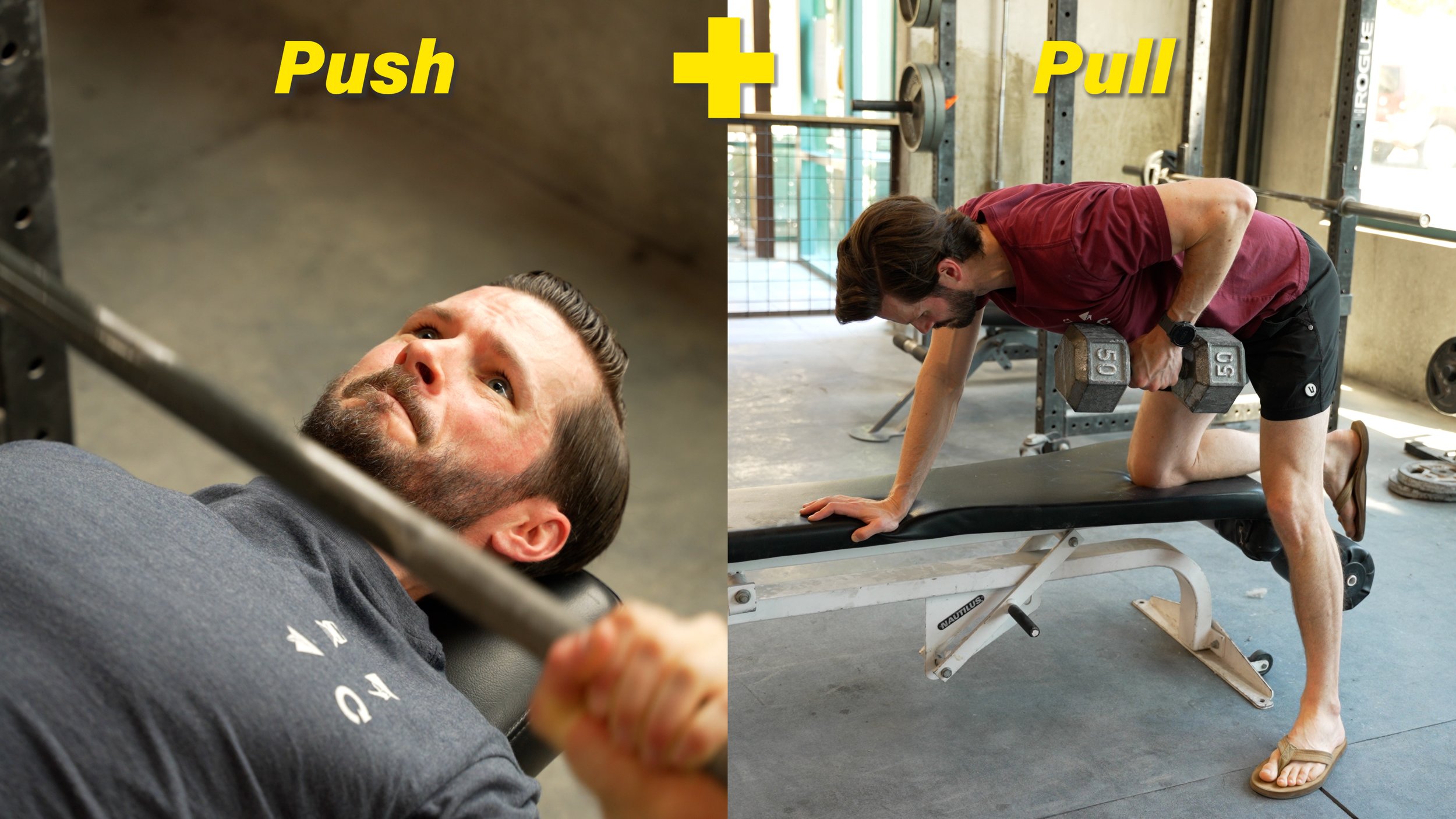10 Science-Backed Ways to Get STRONGER in Half the Time
Hooper’s Beta Ep. 138
Intro
Turns out, some climbers have jobs, friends, families, and other hobbies (or so I’ve heard), so not everyone can do four-hour gym sessions every other day. I know, because I’m one of them! So Emile and I compiled this list of ten science-backed ways to get more gains in less time.
1. Train Like a Minimalist
A lot of climbing and strength training advice comes with the assumption that we’re willing to spend as much time as needed to achieve maximal gains. So if adding an extra hour onto our session gets us, say, 100% of the gains instead of 90%, the maximalist will always do the extra hour. But, if you don’t have that extra time, taking a more minimalist approach to training might not give up as much as you think.
When we look at strength training research, we mostly see that more sets equal more gains, up to a point. However, that doesn’t mean low sets necessarily leads to small results. One study on minimum effective training doses showed that two to three sets per week taken to failure, with an intensity of ~70-85% 1RM, was enough to increase one-rep-max strength in intermediate lifters. In an article from Stronger by Science on “Effective Strength Training for the Time-Poor,” they note “...a handful of working sets of 1-5 repetitions on the major lifts per week, using RPEs from 7.5-9.5 should be sufficient.” Overall, while there are still a lot of unknowns about this topic in the research world, it is entirely possible to get solid strength gains with relatively few sets.
What does this mean for us time-crunched climbers? We can get stronger without a huge time commitment! In fact, some of us could even get away with packing all our strength training into one day per week. Especially for those that are newer to strength training, fast progress can be made with relatively little effort. But, as you get more advanced, it will start to take a little more work to get your body to adapt. So to help make sure you squeeze the most out of every set, we’ll need the next tip.
2. Do Faster, Harder Sets
If we’re training like minimalists, we should be extra conscientious of training *quality.* We don’t have the time to make up for sub-par sets by just tacking on some extra volume. Instead, we need to make every set count, and an excellent way to achieve that is to focus on better intensity.
We’re going to do that with four methods.
If you saw our video on cueing, you might remember that performing reps as fast as possible at a given weight (while maintaining acceptable form) seems to yield better strength gains than slower reps. This is specifically referring to the concentric portion of the rep here. That’s because faster reps help optimize things like motor unit synchronization and rate coding. And since we’re specifically aiming for strength gains, we don’t need to do many reps per set. Generally, around three to five reps is a great range for building strength, though you can go lower or higher if you prefer. But the added bonus of doing fast reps and low-rep sets is that you double the time-saving!
Now, to get the most out of our fast sets, it’s crucial to make sure we’re pushing hard, especially as we get more experienced with weight training. We generally want to be at an intensity between seven to nine out of ten on the RPE scale or around 80% of 1RM, though novice lifters can see gains at lower intensities. However, bear in mind that research shows people are sometimes quite bad at knowing how hard they’re trying. Athletes can easily feel like they’re maxed out on a set when in reality they’ve got several reps left in the tank. For this reason, it can be very useful to occasionally take sets to failure. While going to failure all the time is not required for strength gains, it’s extremely useful to get accustomed to trying at your limit. If this scares you, do it under the supervision of a solid spotter or coach, or use higher reps to test failure rather than jumping right into a high-weight one-rep max.
Now that we’re pushing hard every set, we’ve got another opportunity to streamline things.
3. Use Rest Time More Strategically
There’s often a lot of down time during strength training, because we need fairly long rests to perform at high intensity. In fact, if you timed it out, you’d likely see that most of your workout is actually taken up by rest time. And that’s not necessarily a bad thing, but it does leave room for optimization.
First, make sure you use a timer to keep yourself on track. Short rests of only a minute or two between sets will probably compromise your performance, but excessively long rests of several minutes or more will bloat your session time. The same goes for rests between climbing attempts. A lot of climbers barely even think about rest times when climbing, but as Dan Beall noted in one of our recent episodes, it’s extremely useful for building -- or avoiding -- fatigue.
Second, rather than scrolling through Instagram during your rests, you can use that time much more productively if you want. Stretching and mobility work can be a great between-set activity. For example, in between intense upper body strength sets, do some hip stretches or coordination drills. Or in between lower body sets, maybe work on your overhead mobility. The only thing I would probably avoid is intense stretching for more than 30 seconds of the muscles you’re about to work out if performing strength/power movements. Barring that, this method can save you a nice chunk of time or allow you to get highly functional gains for climbing you wouldn’t otherwise have time for.
Speaking of squeezing out extra gains…
4. Supercharge Your Warm-Up
Combining our warm-up for climbing with some of our strength training can be a great time saver. This is especially true for fingerboarding, since it should only be done at the beginning of a session anyway. Plus, I always find my fingers warm up much slower than the rest of my body, so combining my fingerboarding into my warm-up routine lets me get highly controlled, overloadable finger strength training that actually saves me time when I’m ready to hop on the wall. I don’t have to do nearly as many warm-up routes before I’m ready to try hard.
Other strength exercises can also be combined into your warm-up. The great thing about this is it also tends to force people to think more carefully about how they warm up. If you can substitute some boring warm-up exercises you hate for some strength training, it’s like a double bonus! Just make sure you’re not tiring yourself out so much that you completely compromise your session. A method that we like at Hooper’s Beta would be 3 sets of 3 repetitions at 5RM for each chosen exercise.
But what if you still just can’t seem to fit in strength training without sacrificing too much of your time to climb?
5. Shift Some Training to a Different Time of Day
One of the best efficiency hacks I’ve come across is the realization that you don’t have to do all your training in one big chunk. If you work from home, just have a little time in between meetings, or maybe even a long commute, you can often shift some of your training away from the gym. For example, you could shift your stretching and mobility work to that free half hour you happen to have in the evening. Or you could climb in the morning and do your strength training at home later in the day. Or, you could do one of my favorite methods: fingerboarding (and a little strength training) *before* you get to the gym.
This is why one of my favorite pieces of kit is the doorway-mount from Frictitious, who have kindly reached out to sponsor this video and give our viewers a 20% discount when you buy a hangboard and doorway mount together. The craziest part is how easy this thing is to use. It literally takes seconds to mount and dismount, and you can even get it delivered with the hangboard pre-installed on the doorway mount. It doesn’t damage the walls or require any tools or anything. Worried about how much weight it can hold? Worry not! The walls at my house are paper thin and look how solid this thing is In my opinion it’s the perfect solution for making my training more efficient, because I can now spend much more time at the gym actually climbing. If you combine this with some weights, or better yet, the mixed hanged protocol from Dan Beall that requires no equipment, you can have the cleanest, simplest fingerboard setup anywhere in your house, ready to go whenever you need. We’re super grateful to Frictitious for making such a functional product and for being willing to sponsor free content on this channel. Frictitious is a small business based in Colorado that has supported our work before most people knew about us, so thank you Frictitious and make sure you all check out that 20% discount if you want to get your hands on a setup like this!
Now, you probably thought there couldn’t possibly be more ways to speed up your training, right? Wrong!
6. Do Strategic Supersets
Another stupid-useful method is to do supersets. We can significantly reduce the number of rests we need to take by doing two or more exercises back to back. The best part is, if you pair exercises properly, you won’t be sacrificing much in the way of gains. In fact, in a 2023 study, trained participants who performed a superset of bench press and squats vs. traditional sets, were found to have similar strength improvements but better endurance and of course were more time efficient in the super set group. Just keep in mind, supersets will feel more challenging to some people.
There is a study that shows supersets can create more fatigue than traditional sets so be sure to monitor your fatigue more closely if you start doing supersets.
Push-pull pairs are probably the most common type of superset for climbers, but basically all you’re trying to do is pair exercises that overlap fatigue as little as possible. Research shows supersetting exercises that use the same muscles is not a good way to go, so look for pairs that *mostly* challenge different muscles. Pushups and bench press wouldn’t be a good match, but bench press and face pulls would! Or dare I say you even perform a push, pull…. And leg circuit?!
Seeing as we’re streamlining our exercises, let’s take advantage of the next tip.
7. Do Compound and Bilateral Exercises
Don’t get us wrong, single-joint exercises are awesome for certain purposes. But if you don’t have much time to train, compound exercises can save you some major time. Which ones you choose to do (and which ones you ditch in favor of single joint exercises) should still be determined by your goals.
On a similar thread, while unilateral or single-limb exercises have a time and place, you can definitely save time by doing bilateral exercises instead. Just remember this doesn’t have to be an all-or-nothing approach; you can do both! For example, never training one-arm pullups because they’re unilateral would be silly for a climber. On the other hand, face pulls and cuban rotations are excellent bilateral exercises for climbers that give up little or nothing to their unilateral counterparts.
8. Use Training Blocks or Periodization
There are a *lot* of things we can train to get better at climbing, and it’s impossible to fit them all in every session. There’s simply not enough time to get better at every facet of climbing strength, flexibility, and skill all at once. One solution for that is to leverage our ability to accumulate long-term gains by dividing our training into blocks, also known as periodization.
One block may involve 6-8 weeks of hard strength training and limit bouldering. Another block might dial back the intensity and focus much more on endurance-related exercises. Another block might eschew all strength training in favor of maximizing climbing time to prioritize skill acquisition and climbing performance. If you program things appropriately, in the long run you end up making gains in numerous areas that you may not have been able to accomplish by doing everything all at once. Plus, this method just makes training feel a lot less overwhelming when you’re working with a tight schedule. Win win!
Of course, no amount of strategizing and periodizing will outweigh the importance of the next tip…
9. Dial In Your Recovery
To get the most out of the time you have to train, you simply cannot ignore recovery. Just like every set needs to count if you want to see strength gains, every rest day needs to count if you want to actually progress. We won’t bother beating the dead diet- and sleep-horse, but just know that too much mental and physical fatigue will prevent you from making progress, so you need to be relatively fresh when you enter the gym.
For some climbers who struggle with lethargy, pre-workout supplements and sources of caffeine can actually help us achieve better training outcomes. Research shows that even in individuals who habitually consume it, caffeine has a small but positive impact on performance. So even coffee-addicts, like me, can see training benefits from caffeine. Though I’m not advising you to start drinking more coffee (though we might become best friends if you do). Just letting you know the options!
10. Write a Plan
Last but definitely not least, everyone knows the best way to get something done efficiently is to do absolutely zero preparation and wing it, right?
No, that’s a terrible idea! No matter how many tips we know about training like a minimalist, it will be very hard to put any of them into practice if you always arrive at the gym without a plan. You’ll either waste time trying to figure out what you want to do that session, or you’ll easily get distracted and lose track of what you intended to do.
So, make a list of what you want to accomplish in a session and during the week, and give everything an approximate time frame to stick to. It doesn’t need to be super detailed or “optimal,” it just needs to show some solid intention.
If you have no idea what exercises to choose, make sure you check out our mega video on how to train for climbing. You can also try out this super basic training program I put together, which you should modify as you see fit. And if you really want to optimize your training even further, I highly recommend talking to a reputable climbing coach that can create a catered program to fit your wants and needs.
BONUS: Be Consistent
The best way to ensure you don’t waste all that efficient training you’re now doing is to stick to a consistent schedule. Just coming into the gym sporadically and maybe doing a workout a few times a month will not yield satisfactory results. So remember: it doesn’t matter how well you apply all these tips if you’re inconsistent with your training. Consistency is key!!
Conclusion
Be sure to use that link in the description to check out the Frictitious doorway mount, and thank you to everyone who supports free science-based content for climbers on this channel. Until next time: train, climb, send, and repeat… efficiently.
CITATIONS
Evangelista AL, De Souza EO, Moreira DCB, et al. Interset Stretching vs. Traditional Strength Training: Effects on Muscle Strength and Size in Untrained Individuals. J Strength Cond Res. 2019;33 Suppl 1:S159-S166. doi:10.1519/JSC.0000000000003036 [1]
Schoenfeld BJ, Wackerhage H, De Souza E. Inter-set stretch: A potential time-efficient strategy for enhancing skeletal muscle adaptations. Front Sports Act Living. 2022;4:1035190. Published 2022 Nov 15. doi:10.3389/fspor.2022.1035190 [2]
Moesgaard L, Beck MM, Christiansen L, Aagaard P, Lundbye-Jensen J. Effects of Periodization on Strength and Muscle Hypertrophy in Volume-Equated Resistance Training Programs: A Systematic Review and Meta-analysis. Sports Med. 2022;52(7):1647-1666. doi:10.1007/s40279-021-01636-1 [3]
This meta-analysis indicates that 1RM improved greater in the periodized groups compared to non-periodized.
Hypertrophy was not significantly different.
Suggests that neuromuscular adaptations are at play with periodized training.
García-Orea GP, Rodríguez-Rosell D, Ballester-Sánchez Á, Da Silva-Grigoletto ME, Belando-Pedreño N. Upper-lower body super-sets vs. traditional sets for inducing chronic athletic performance improvements. PeerJ. 2023;11:e14636. Published 2023 Feb 21. doi:10.7717/peerj.14636 [4]
Weakley JJS, Till K, Read DB, et al. The effects of traditional, superset, and tri-set resistance training structures on perceived intensity and physiological responses. Eur J Appl Physiol. 2017;117(9):1877-1889. doi:10.1007/s00421-017-3680-3
Andersen V, Fimland MS, Iversen VM, et al. A Comparison of Affective Responses Between Time Efficient and Traditional Resistance Training. Front Psychol. 2022;13:912368. Published 2022 Jun 16. doi:10.3389/fpsyg.2022.912368
DISCLAIMER
As always, exercises are to be performed assuming your own risk and should not be done if you feel you are at risk for injury. See a medical professional if you have concerns before starting new exercises.
Written and Presented by Jason Hooper, PT, DPT, OCS, SCS, CAFS
IG: @hoopersbetaofficial
Filming and Editing by Emile Modesitt
www.emilemodesitt.com
IG: @emile166







